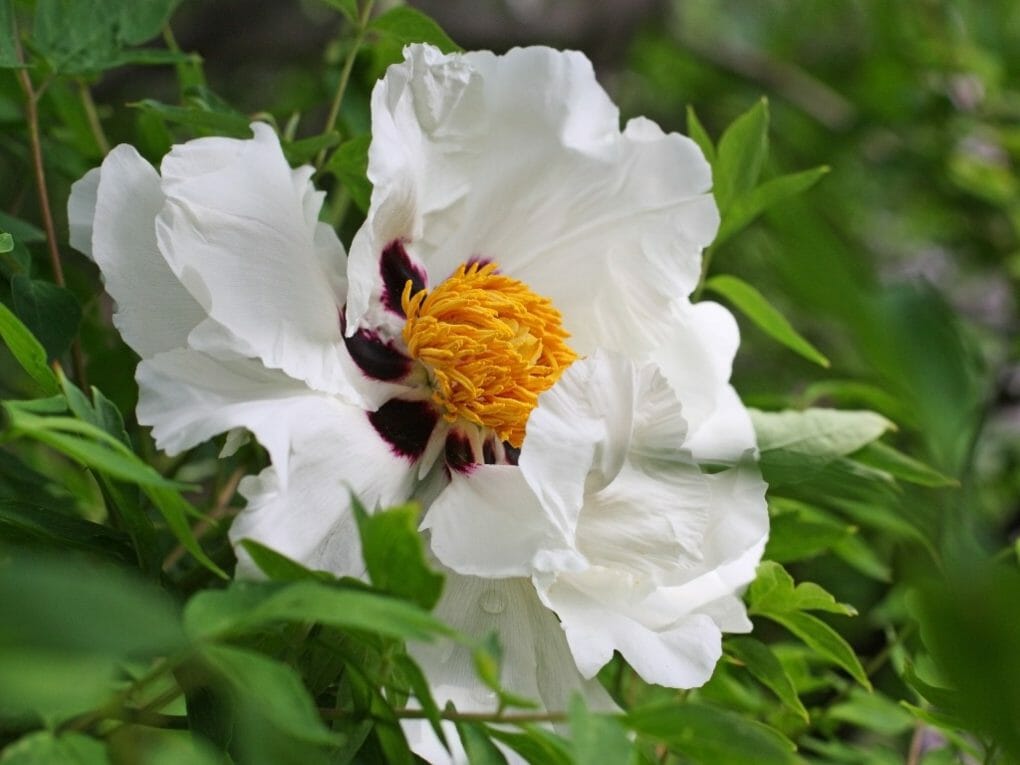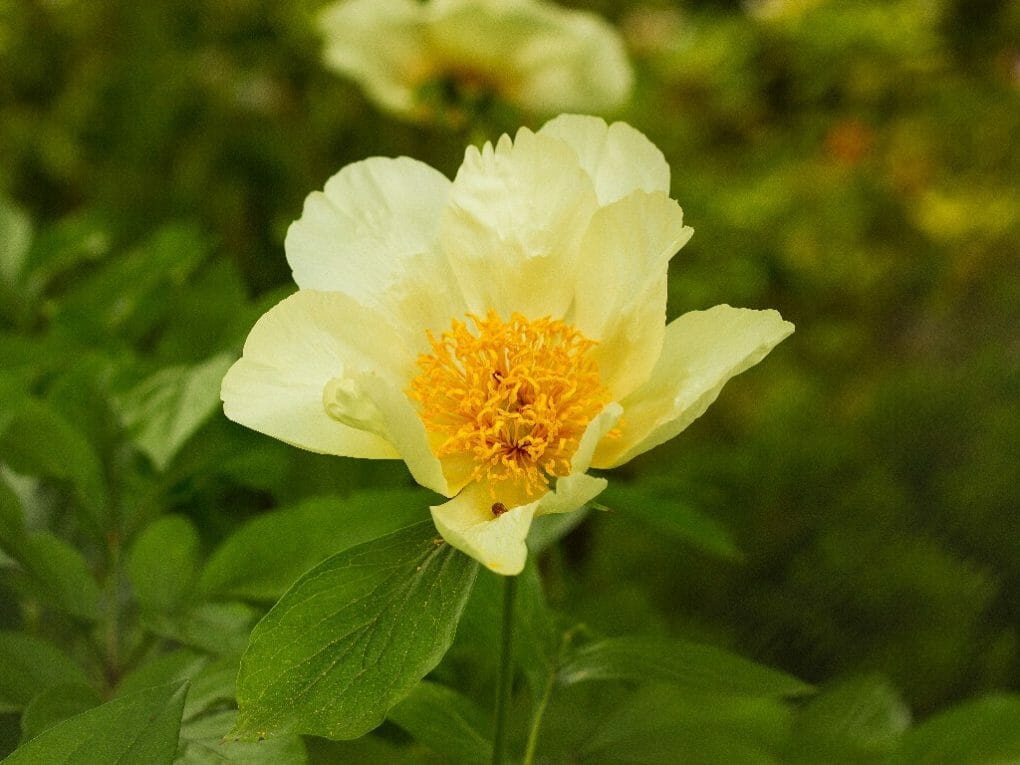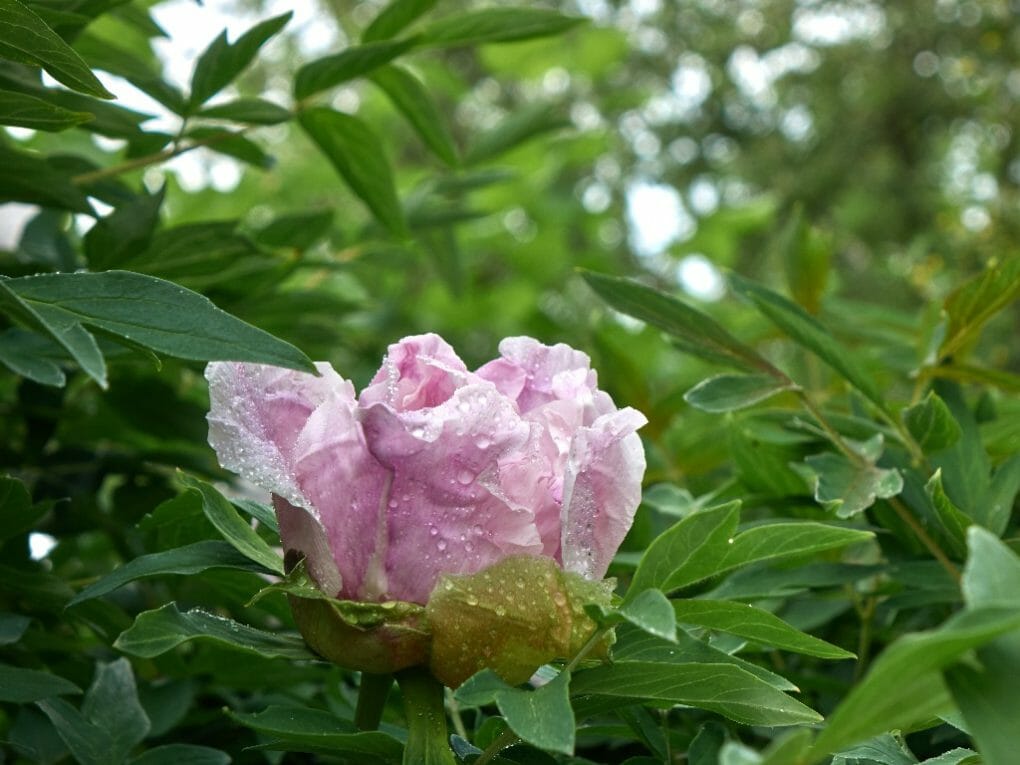Are Peonies Evergreen? Are Peonies Perennial?

Peonies are deciduous perennial shrubs that can tolerate cold climates. They are most successful in areas ranging from cool to chilly and with regular rainfall. In addition, if you provide them with the appropriate cultural conditions—such as soil and sunlight—they can thrive in USDA plant hardiness zones 3-8. They are only found naturally in the northern hemisphere, which includes a significant portion of Europe and Asia. The Brown’s peony, or Paeonia brownii, is a peony species indigenous to the United States’ northwest region.
Table of Contents
Are Peonies Perennial?
Peonies are considered to be “perennials,” which indicates that they have a lifespan that is greater than two years. The phrase is used to differentiate plants with little woody growth from trees and shrubs, but it is also used to contrast shorter-lived biennials and annuals (also technically perennials).
Peonies are types of herbaceous perennial plants that grow during spring and summer. They go dormant every fall and winter but come back to life (in the spring!) from their rootstocks after the dormancy period is over. On the other hand, there is a far more uncommon variety of peonies called a tree peony that you have never seen before! These woody shrubs develop in a manner quite similar to that of rose bushes, and the sturdy woody stems that they possess to support the development of big flowers. When the intrepid traveler Marco Polo came across a peony tree, he remarked that the flowers resembled “roses as huge as cabbages.”
Peony Plant Forms and Growth Habits

Peonies are available in a wide range of plant shapes and growth patterns. Herbaceous peonies have a fleshy appearance and die completely over the winter months; the buds that will produce fresh growth are located underground. The following are examples of species of herbaceous peony that are considered to be of great importance. The peony (P. lactiflora), often known as the common garden peony, is the herbaceous species that may be found in most home gardens. It comes in a wide range of blossom shapes and colors. Both the P. officinalis and the P. peregrina are sought after for their beautiful red blossoms, and both are native to Europe. Those who cultivate in the shadow will have the most success with woodland peonies, such as P. japonica and P. obovata. The unusual fern leaf peony, also known as P. tenuifolia, is distinguished by the finely cut foliage resembling ferns and the crimson red flowers it bears.
Peonies are available in a wide range of plant shapes and growth patterns. Herbaceous peonies have a fleshy appearance and die completely over the winter months; the buds that will produce fresh growth are located underground. The following are examples of species of herbaceous peony that are considered to be of great importance. The peony (P. lactiflora), often known as the common garden peony, is the herbaceous species that may be found in most home gardens. It comes in a wide range of blossom shapes and colors. Both the P. officinalis and the P. peregrina are sought after for their beautiful red blossoms, and both are native to Europe. Those who cultivate in the shadow will have the most success with woodland peonies, such as P. japonica and P. obovata. The unusual fern leaf peony, also known as P. tenuifolia, is distinguished by the finely cut foliage resembling ferns and the crimson red flowers it bears.
- Tree Peonies- this type of peony, also known as P. suffruticosa, is a multi-stemmed shrub composed of wood. The woody stems are kept throughout the year, and buds for the following year’s development can be found on them. The tree peonies known as P. delavayi (red) and P. lutea (yellow) are highly sought after due to their distinctive colors.
- Intersectional Peonies- is a hybrid produced when a tree peony and a herbaceous peony are crossed with one another. It is named after the Japanese nurseryman Toichi Itoh, who was the first to successfully create this hybrid. This peony is also known as an Itoh peony. Peonies of the intersectional type have sturdy, short, woody stems and large flowers, just like tree peonies, but during the winter, they die back to the ground, just like herbaceous peonies.
Peonies, which are medium-sized shrubs, come in a wide range of shapes, sizes, and growth patterns; therefore, they require adequate space. Tree peonies can reach heights of between 3 and 7 feet. In contrast, herbaceous varieties can reach heights of between 2 and 4 feet, intersectional can reach heights of between 2 and 2.5 feet, and woodland species typically reach heights of between 1 and 1.5 feet. The majority have a span of between three and five feet. Plants can either be upright or spread out over their environment. Peonies that are tall, herbaceous plants and have long stems, and large, full flowers need to be staked so that they can remain upright. Peonies that are herbaceous and have fewer, smaller flowers and stems that are shorter and more robust (for example, single, Japanese, or anemone flower forms) require less support. Stems of tree peonies that are both healthy and mature typically do not require staking.
Peony Flowers Blooming in the Springtime

When home gardeners strategically combine sequential peony flowering with a variety of peony flower forms, they can create a beauty that cannot be equaled. The blooming period for peonies lasts for around seven to eight weeks, from the end of April to the beginning of June (hardiness zones 6 to 7). In general, flowers bloom in the following sequence: woodland peonies, then tree peonies, followed by herbaceous species, and finally, intersectional hybrids (Itoh).
Peonies, particularly herbaceous species and intersectional hybrids, do best when grown in direct sunlight (Itoh). Tree peonies can grow in full sun or dappled shade; however, the enormous blossoms on these plants may remain more intact if they are grown in dappled shade. The early flowering forest peony enjoys the sun in the spring but does well in the shade during the summer.
